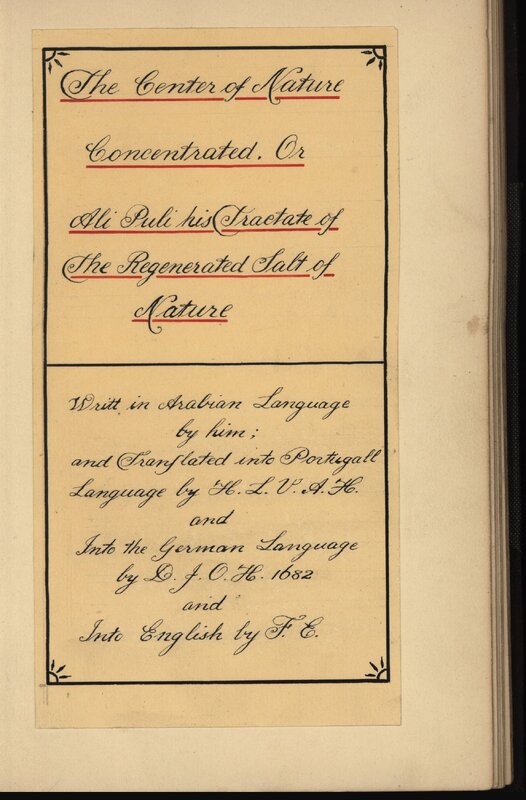
Selections from "The Centre of Nature Concentrated"
This is a nineteenth-century manuscript which copied a late seventeenth-century treatise. Although it is attributed to Ali Puli, this was likely a pseudonym for the German scientist Johan Otton von Helwig. This is the only item used in this exhibit not written in verse. It still shows many of the characteristics of earlier works, such as metaphors, an universal view of science and spiritual elements.
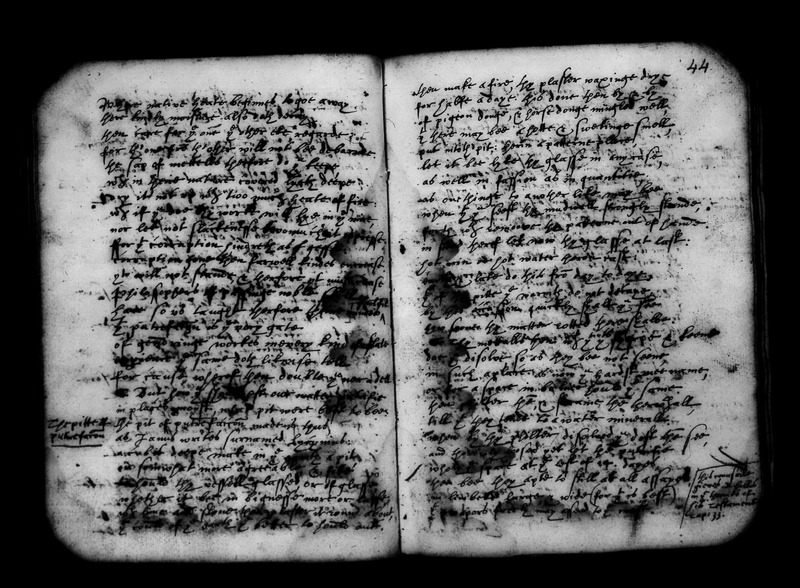
Selections from "A treatise touchinge the Philosopher Stone"
Theologian Edward Cradock wrote this treatise in the later sixteenth century. It is written in verse and divided into several sections. Its focus is on providing instructions to create the philosopher's stone, but Cradock uses metaphors more than clear directions. Interestingly, it is dedicated to Queen Elizabeth.
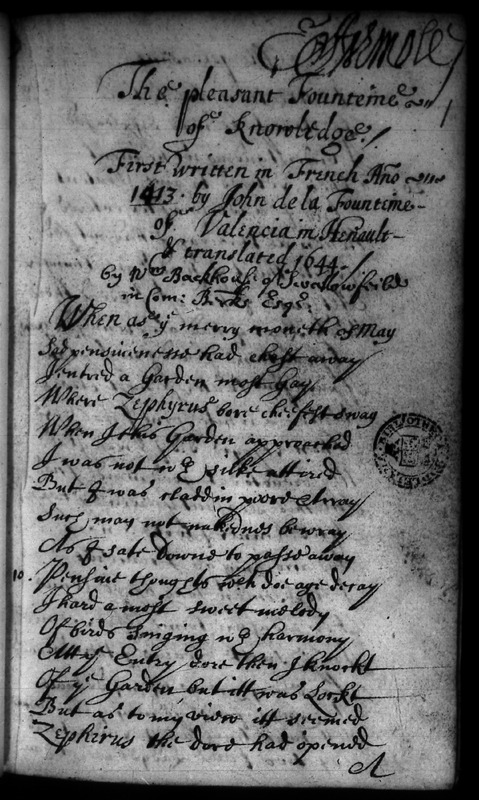
Selections from "The pleasant Founteine of Knowledge"
This poem was written in French in 1413 before William Backhouse translated it in 1644. It is a dream-like sequence where an alchemist visits a 'Fountain of Knowledge' to speak with Knowledge and Reason, again wanting to make the Philosopher's Stone.
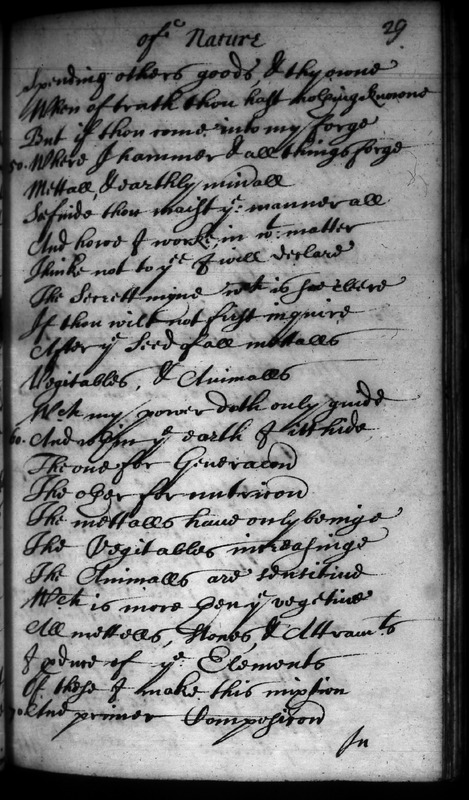
Selections from "The Complaint of Nature against [the] erronious Alchymist"
This is another poem translated by William Backhouse in 1644. However, this was written sometime before 1557 and attributed to a thirteenth-century writer. In this poem, Nature scolds alchemists for thinking they can imitate her processes for creating gold or the Philosopher's Stone.
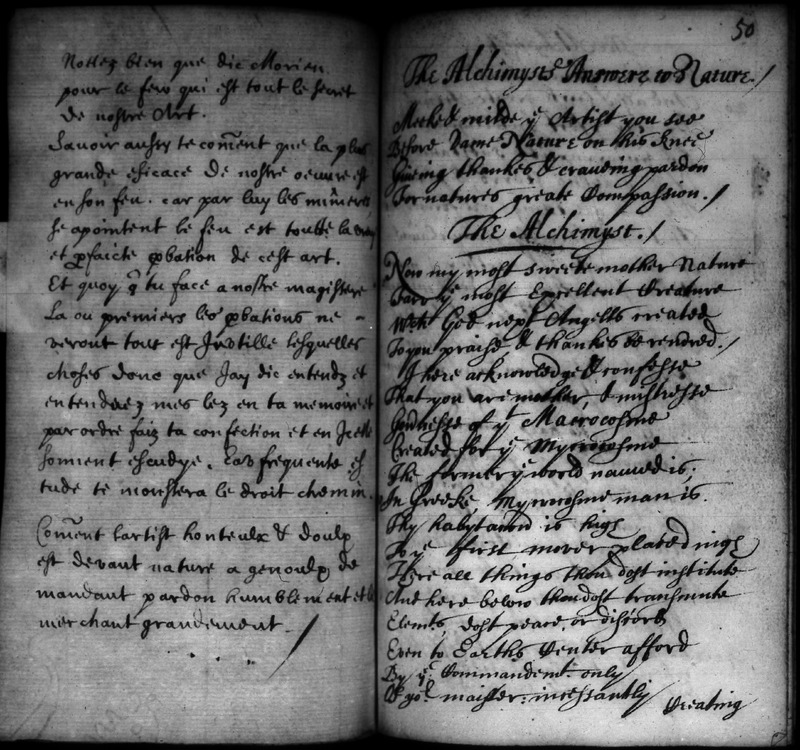
Selections from "The Alchimyst's Answere to Nature"
This poem is a response to "The Complaint of Nature" and was translated in 1644 by William Backhouse. It was likely written at the same time as "The Complaint." In the poem, the alchemist responds to Nature, asserting his humbleness and saying he is trying to imitate her.
A Note on Transcriptions
The transcriptions available underneath some images within the exhibit mostly use semi-diplomatic transcription. I have only departed to add quotations marks when someone is speaking for clarity. More information on the transcription conventions I used can be found here.
These are some of the most common symbols I used:
xx: This means are word was written in shorthand and the italicized letters have been expanded. For example, 'the' was commonly written in shorthand by omitting the 'h' and is represented like this in the transcription 'the'
[xx]: This means I have supplied letters that were omitted in the word, but are most likely what the author meant. Used when the word was not a shorthand symbol.
\xx/: This means the letters or word was written in between lines of the text.
Home Page 🔥 A Brief Introduction 🔥 The Motivations of Alchemists
Alchemical Metaphors and Practices 🔥 About 🔥 Index